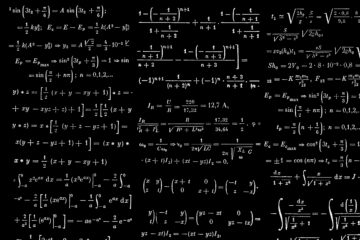The human desire to create entities that help cope with the burdens of life is manifested in the various tools of Artificial Intelligence. While in November 2022, global public opinion focused on AI – with the media breakthrough of ChatGPT – it is important to remember that it is a long-standing field.[i]
On this occasion, our goal is to delve into how Artificial Intelligence has taken shape from various disciplines. Starting with this blog post, we will publish a series dedicated to the main fields that comprise it. Therefore, we will explore philosophical ideas about AI in the following paragraphs. Understanding these ideas is crucial for untangling the ethical, political, economic, and legal implications.
Likewise, a better understanding of this field is achieved historically rather than simply analyzing the tools that technological industries have recently created. The delineation of any ethical, political, economic, or legal implications of Artificial Intelligence is biased if we are unaware of the contexts that shape this field.
We must address a linguistic problem regarding Artificial Intelligence, as the concept has become subsumed into a simple reference to technological industry applications. This is crucial because various issues go unnoticed when the idea is solely equated with generative AI tools.
From now on, it is essential to clarify that we will follow the exposition of Stuart RUSSELL and Peter NORVIG in their book “Artificial Intelligence: A Modern Approach” during this series of blog entries. Therefore, our opinions should be understood as mere inquiries into AI‘s state of the art. Moreover, nothing presented here has a status of definitiveness; on the contrary, these are mere conjectures.
In Search of Intelligent Machines
In 1950, the English mathematician Alan TURING (1912–1954) devised an evaluation test for the ability of machines to exhibit intelligent behaviors or those equivalent to humans. Among the capabilities of a computer to pass the test are 1) natural language processing, 2) knowledge representation, 3) automated reasoning, 4) machine learning, 5) computer vision, and 6) robotics.[ii]
Based on the above, we can know why understanding how humans think is fundamental for Artificial Intelligence. Cognitive sciences play a crucial role in AI as a theory of mind is required to express it as a computational program. In this sense, AI can be understood as a field where sciences, engineering, and humanities intersect, aiming to construct intelligent entities.
Additionally, it is essential to remember that computational agents differ from programs because they seek to do more than simple sequences of operations. For example, they operate autonomously, perceive environments, persist over an extended period, adapt to change, and create or pursue goals.
The Laws of Thought
In ancient Greece, Aristotle (382–322 BCE) sought to structure correct thinking to understand the laws governing mental operations. Syllogisms provided patterns for argumentative structures that would always lead to accurate conclusions if started with the correct premises.
Following Stuart RUSSELL and Peter NORVIG, making correct inferences is fundamental from the perspective of the laws of thought in Artificial Intelligence. Subsequently, since a rational agent must make accurate inferences, one way to act rationally is by thinking logically.
However, despite the previous assertion, the authors also acknowledge rational ways of acting that do not necessarily involve logical inferences. For example, when we immediately move away from a hot stove by reflex instead of contemplating the action to be taken.
“Intelligent” Devices
In 1623, Wilhelm SCHICKARD (1592–1635), a German professor of Hebrew and astronomy, designed a direct-entry calculating machine. This device was the first calculating machine—its influence on mechanical calculators is still debated—due to the integration of NAPIER‘s rods, rotated for multiplication, with an adding device.
Despite the technological advancement represented by this machine, Blaise PASCAL‘s (1623–1662) device had greater dissemination than SCHICKARD‘s invention. On the other hand, in 1672, the German polymath Gottfried Wilhelm LEIBNIZ (1646–1716) designed a machine called the stepped reckoner. This device aimed to perform operations through concepts rather than numbers.
Philosophical Ideas behind AI
René DESCARTES (1569-1650) was the first thinker to inquire into the distinction between the mind and the matter that makes it possible. The French philosopher is an exponent of rationalism, considering that reasoning plays a crucial role in understanding the world. He is also linked to dualism, asserting that a part of the human mind is outside nature, exempt from physical laws.
According to RUSSELL and NORVIG, from the perspective of materialism – in opposition to the previous thesis – it is asserted that “the brain’s operations subject to the laws of physics constitute the mind.” Therefore, free will is defined as how perception (of the available choices) appears in the face of the chosen entity.[iii]
On the other hand, from logical positivism, Rudolf CARNAP (1891–1970) asserts that all knowledge can be understood as logical theories linked to sentences of sensory observation. In the book “Der logische Aufbau der Welt” (1928), CARNAP defined an explicit computational procedure for extracting knowledge from elementary experiences. According to RUSSELL and NORVIG, this is considered the first theory of the mind as a computational process.
Furthermore, the authors of “Artificial Intelligence: A Modern Approach” point out that the connection between knowledge and action is the ultimate element from the perspective of the philosophy of mind. In the case of Artificial Intelligence, this issue is fundamental since constructing intelligent entities is one of its primary purposes.
Aristotle (382–322 BCE) maintained that “the logical connection between goals and knowledge of the results of the action justifies actions.”[iv] In this sense, among several actions, we cannot determine which one will be performed or which one will achieve the result when considering the analysis based on objectives. However, the French theologian and philosopher Antoine ARNAULD (1612 – 1694), in his book “La logique, ou l’art de penser” (1683), suggested a quantitative formula for deciding the action to take in these cases.
Finally, RUSSELL and NORVIG remind us that John STUART MILL (1806–1873), in the book “Utilitarianism” (1863), advocated for the idea of the criterion of rational decision-making in all human domains. This idea is fundamental in Artificial Intelligence since it needs to develop the ability to choose among various options when creating intelligent entities.
Some Conjectures
Firstly, it is essential to remember that ideas are not entities that move ethereally through time or space. Ideas arise in specific linguistic and social contexts, as the Cambridge School maintains from Quentin SKINNER‘s perspective.[v]
Artificial Intelligence encompasses a disciplinary field but extends to technological and industrial sectors, tools, and applications. In this sense, reducing the meaning of AI to any of these aspects distorts the understanding of a highly complex field.
However, when trying to understand the development of a field like Artificial Intelligence, it is reasonable to think that it will be sufficient to identify specific ideas for comprehension. We have reservations about this approach’s effectiveness; however, we do not deny that it could be helpful for didactic purposes.
When a person seeks to inquire about the meaning of an idea, it is appropriate to understand the intellectual framework surrounding it. From this perspective, one can find reference points that aid in comprehending its significance. However, accurate understanding is achieved through knowledge of these points and requires understanding the contexts that shape them.
A correct understanding of Artificial Intelligence will favor regulations that, while allowing its development, ensure the safety and well-being of humanity. In this sense, the accurate—or inaccurate—appreciation of AI will result in either the most significant benefit or the greatest harm to human beings.
Through these conjectures, at IP Consultores, we aim to foster informed and critical discussion beyond the simplistic news circulating in the media about Artificial Intelligence. Therefore, we encourage a reasoned debate on an issue that is transforming the lives of millions of people. In the spirit of Ronald DWORKIN (1931-2013), Artificial Intelligence is a matter we must take seriously.
[i] I thank the Benjamin FRANKLIN Library’s U.S. embassy in Mexico for organizing the English Conversation Club “Evolution of Artificial Intelligence and its Impact” from October 31 to December 13. I am grateful to Professor Susana GOBITAS, who led this fantastic club and let us think freely about artificial intelligence issues. It was the best introduction to the AI field.
[ii] RUSSELL, Stuart J., and NORVIG, Peter, Artificial Intelligence. A Modern Approach, 3rd ed., Pearson Education, 2010, pp. 2-3.
[iii] ibidem, p. 6.
[iv] ibidem, p. 7.
[v] For a proper understanding of Professor Quentin SKINNER’s perspective, refer to Visions of Politics. Volume I: Regarding Method, Cambridge University Press, 2002, pp. 86-87


0 comentarios